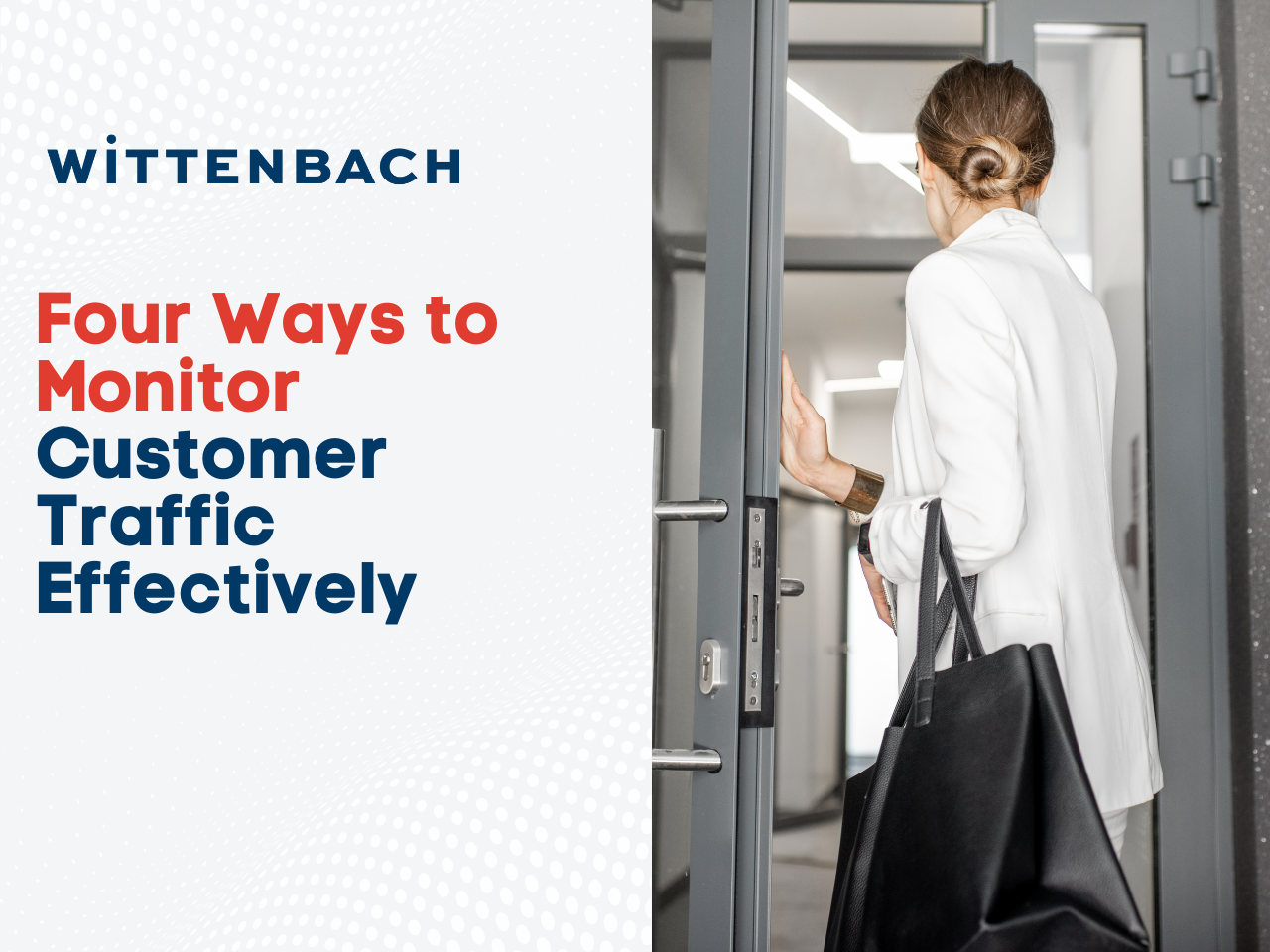Monitoring customer traffic is crucial in determining the success of a business. Traffic analysis measures the actions and behaviors of customers, in addition to analyzing what these behaviors mean. Through technology such as facial recognition cameras, artificial intelligence, video analytics, people counting sensors, and both mobile and Wi-Fi tracking, businesses can be sure to provide security and convenience to their customers while still maximizing their gains.
Why focus on monitoring customer traffic?
It is beneficial to monitor customer traffic for multiple reasons. Regarding security, monitoring customer traffic and identifying the most populated areas of a location can help ensure that certain areas do not become overcrowded. In addition, monitoring traffic can make sure that these areas are not susceptible to breach, and that the wrong people are not able to enter. Traffic monitoring is applicable across industries, serving in settings such as financial institutions, retail shops, hospitals, government buildings, office buildings, campuses, warehouses, and much more.
Monitoring customer traffic also helps to make sure that a shopping experience or entry to a secured facility is not unnecessarily delayed due to long queues. The subsequent data from monitoring activities allows business owners to create a firm understanding of which areas are frequented the most, which they can then utilize to their advantage and plan accordingly. Making sure that your institution is staffing more at peak times and less at others is one way to do this as a result of monitoring traffic. Furthermore, considering hours of operation, opening and closing new locations, knowing when heightened security is needed, and other cost considerations are important when monitoring customer traffic.
According to Premise, high foot traffic often leads to both increased sales and increased customer engagement. On the other hand, low foot traffic can be a good warning sign in needing to improve marketing efforts, or in changing the store’s layout. Staying one step ahead of these patterns ensures that your business will have the best chance at success.
It is important to understand exactly what foot traffic is. Foot traffic can apply both to the financial sector and the commercial sector, from banks and credit unions, to office buildings, to hospitals, schools, and warehouses. According to Investopedia, it is defined as the number of customers that enter a location, especially retail stores. Foot traffic can be used to measure the success of a store’s performance, the effectiveness of its marketing, and the overall interest of the customers. Higher foot traffic typically correlates with higher sales, and vice versa, which is one reason why it is so important to have an accurate metric.
Drive-thru traffic is another important aspect of monitoring customers at a branch or restaurant. Especially within bank branches, drive-thrus are an important way for customers to access the bank without having to enter the building. Monitoring and analyzing customer traffic within these drive-thrus is best done through video analysis.
1. People counting sensors
People counting sensors are placed at both entry and exit points within a location. They utilize technology like infrared beams, thermal imaging, and Wi-Fi signals in order to keep a count of the exact number of people coming in and out. Stores, especially retail locations in malls and populated areas, can use this data to plan staffing and understand trends in daily shopping.
2. Video analytics
Video analytics are another popular method of measuring traffic. Video analytics are helpful to track customer behavior, and can be implemented through the installation of cameras within a location. These cameras analyze user movement, which allows the retailer to analyze user behavior. This method is especially useful in determining which specific areas within a location are the most popular among customers.
3. Mobile tracking
Mobile tracking is made possible through the use of GPS technology. Retailers can track traffic through the customers’ mobile devices in order to follow their exact movements throughout a location. This is helpful in determining which section of a store is visited the most, or how long a customer spends inside. The one benefit of this method is that it is precise and does not require any particular device to be installed, unlike the people counting sensors or cameras for video analytics.
4. Wi-Fi tracking
Finally, Wi-Fi tracking is done through capturing the Wi-Fi signals of customers’ mobile devices. The data is collected at minimal levels through both Bluetooth and Wi-Fi, and at larger levels through GPS. It is more reliable and accurate in large areas, as it can be collected in real time.
Wittenbach works with leading manufacturers of effective customer traffic monitoring products.
At Wittenbach, we recognize that our strategic partnerships fuel our deep insight across industries and with leading-edge manufacturers. We share this knowledge to allow you to make informed decisions when purchasing or upgrading the tools to effectively monitor those who enter and exit your premises.
1. Turnstiles are one method of security that can help control and manage foot traffic. Turnstiles can help your institution maintain an inviting appearance, while still regulating traffic and deterring unintended entry. Turnstiles are especially useful in high-volume areas. Our partner, Hamilton, offers a wide range of turnstiles, including tripod turnstiles and both full- and half-height turnstiles. Hamilton’s variety of products offer solutions to fit any budget.
2. NVR video surveillance systems are also available to help with monitoring and analyzing customer traffic. These systems, short for “network video recorders,” use digital internet protocol, or IP, cameras in addition to Ethernet cables in order to transmit security footage to a hard disk, or, more recently, to the cloud. NVR systems offer high resolution and clarity. Our partner, electronic security manufacturer Verint, offers a series of NVR systems. We recommend the Verint EdgeVR 300, which can accommodate up to 64 cameras at one time.
3. NVR systems can also be integrated with facial recognition technology, which can be used to deter criminals and heighten security. Facial recognition technology, in addition to artificial intelligence, or AI, can provide a more detailed and accurate account of who is entering and exiting an establishment. While AI is appropriate for enhancing security measures, in the future it can also be used to track which customers are regulars and which are new. This can help companies analyze the success of the marketing campaigns, in addition to the demographics their locations are supporting.
4. DMP now offers system owners and Central Station operators a powerful, new security tool: Video Verification. This feature pushes an alert to end users’ mobile devices, including the ability to view live or recorded images. Central Stations can be given the same access to cameras. This firsthand visual information enables faster assessment and more appropriate response, drastically reducing false dispatches. Accessed through the DMP Virtual Keypad App, and compatible with new and existing DMP XTL, XT and XR series panels, these benefits can be accessed with cellular and internet connections. Interior and exterior camera options, including motion-sensing and pan/tilt models, and recorded alarm-initiated footage, empowering the central station operator to record the live footage during a 30 minute period following an alarm.
In summary
There are quite a few ways to monitor customer traffic. These include through the use of people counting sensors, thermal imaging, video analytics, Wi-Fi and Bluetooth tracking, artificial intelligence and facial recognition cameras, NVR surveillance systems, turnstiles, and video verification. As more tracking technology becomes available, there emerge better ways to monitor customer traffic.
Wittenbach is at the forefront of these developments and can ensure your institution is equipped with the best methods to both monitor and analyze traffic. Through its partnerships with key industry leaders, Wittenbach is able to recommend the best products to both monitor customer traffic and analyze any patterns, therefore allowing you to maximize the success of your business. To best provide security and convenience to your customers, contact us for a consultation or to learn more about monitoring traffic effectively.




